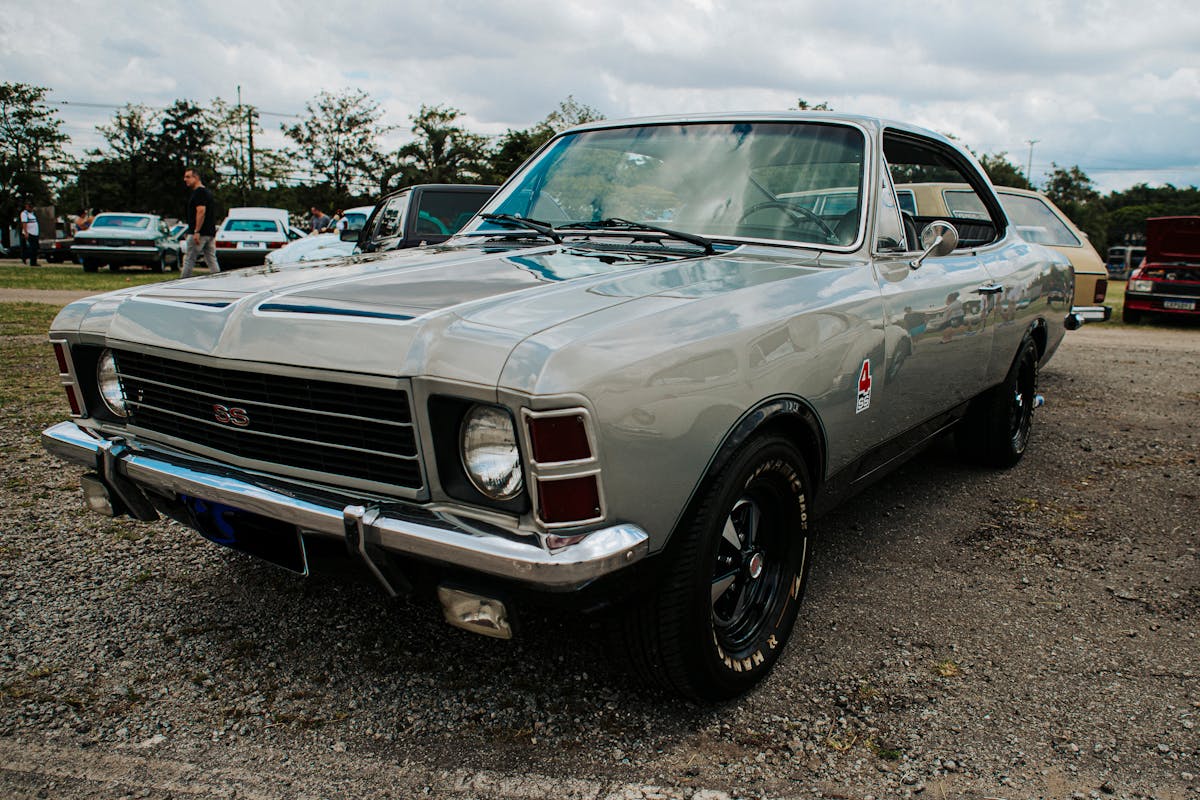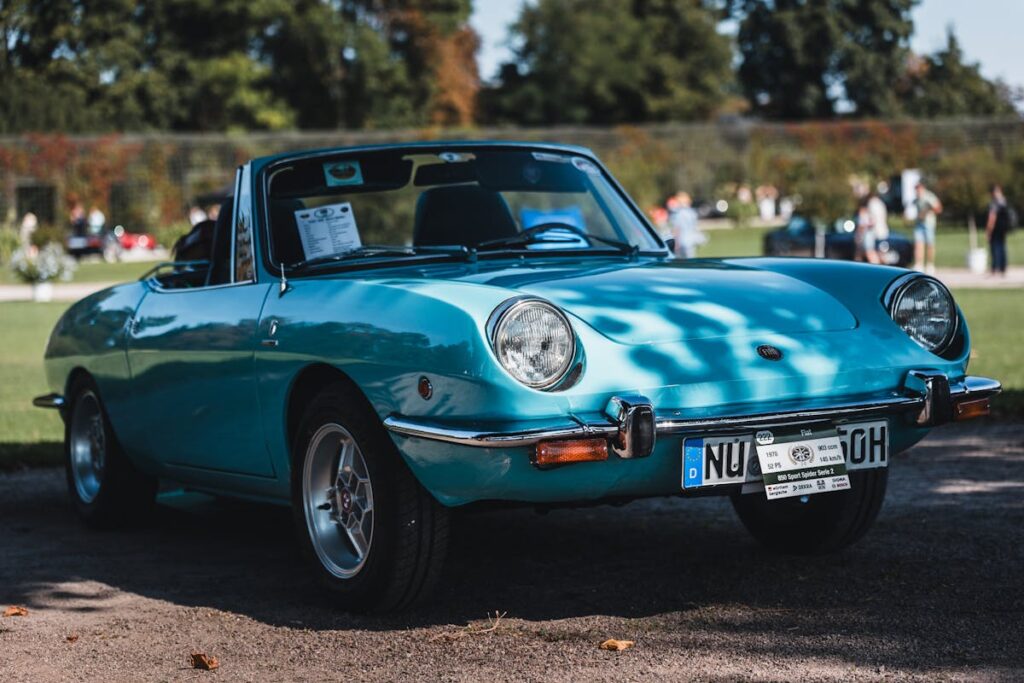The allure and value of classic cars have surpassed the confines of mere transportation, evolving into a unique blend of history, art, and engineering. Among these, certain models such as the 1962 Ferrari 250 GTO, the 1955 Jaguar D-Type, and the 1956 Aston Martin DBR1 have ascended to staggering heights of value and acclaim. Their rarity, combined with their racing pedigree and innovative design, has made them irresistible to collectors and investors alike. As we journey through the annals of automotive history, we shall further explore these remarkable vehicles and the reasons behind their extraordinary worth.
The Priceless 1962 Ferrari 250 GTO
Among the pantheon of classic automobiles, the 1962 Ferrari 250 GTO occupies a position of unparalleled prestige. A culmination of Italian craftsmanship and innovative engineering, the 250 GTO was a tour de force upon its debut in the early 1960s. Its impeccable racing pedigree, owing to Ferrari’s dominance on the track, was a proof of the brand’s commitment to performance and speed.
The design elements of the 250 GTO were revolutionary for its time. The aerodynamic shape of the body, a delicate balance between beauty and functionality, was designed to reduce drag and increase speed. The car was powered by a 3.0-liter V12 engine that produced 300 horsepower, making it a fearsome competitor in motorsport. The 250 GTO’s design was not just about aesthetics; it was a tangible manifestation of Ferrari’s racing ethos.
The 1962 Ferrari 250 GTO’s value lies in its rarity and its illustrious history. Only 36 units were made, making it one of the most sought-after classic cars. The 250 GTO also dominated the 1962 and 1963 racing seasons, further engraving its status among classic car enthusiasts. Its design elements and racing pedigree make the 1962 Ferrari 250 GTO a timeless classic and a priceless piece of automobile history.
The Iconic 1956 Aston Martin DBR1
While the 1962 Ferrari 250 GTO boasts an unrivaled position in the domain of classic cars, another vehicle that commands equal respect and admiration is the 1956 Aston Martin DBR1. Regarding design innovations, the DBR1 was a trailblazer. The team led by Ted Cutting created a car with an elegant design that was both lightweight and aerodynamic. Its distinctive green paintwork, flowing lines, and open-top design became synonymous with Aston Martin’s post-war sports cars.
The DBR1’s racing heritage is equally impressive. It was constructed with a singular purpose: to win the 24 Hours of Le Mans, a goal it achieved in 1959. This victory cemented the DBR1’s place in motoring lore, and it remains the only Aston Martin to have achieved this feat.
To this day, the 1956 Aston Martin DBR1 is revered for its winning combination of design innovation and racing pedigree. Its impact on the automotive world is significant and enduring, reflecting the genius of its creators and the era that produced it. It stands as a tribute to Aston Martin’s commitment to excellence and performance.
The Legendary 1935 Duesenberg SSJ
Garnering its own unique place in the annals of automotive history, the Legendary 1935 Duesenberg SSJ is a veritable gem of the pre-war era. An epitome of the Duesenberg design, the SSJ featured a compact yet powerful supercharged straight-eight engine, that was a demonstration of the brand’s engineering prowess.
The SSJ performance was nothing short of groundbreaking, with its ability to reach a top speed of 140 miles per hour, a feat virtually unheard of during its time. This was made possible by the car’s lightweight design and its short wheelbase, which lent it an exceptional power-to-weight ratio.
The SSJ’s design was a marvel of elegance and sophistication. Its long hood, sweeping fenders, and convertible top gave it an air of opulence that was synonymous with the Duesenberg name. Only two of these majestic machines were ever produced, making them incredibly rare and coveted.
The Classic 1954 Mercedes-Benz W196
Breaking new ground in the world of motorsport, the Classic 1954 Mercedes-Benz W196 emerged as a revolutionary figure in the mid-20th century automotive scene. This model was a conspicuous manifestation of engineering excellence, combining innovative technology with a timeless aesthetic that has since become synonymous with the Mercedes-Benz brand.
The W196 was the first Formula One car to employ a fuel-injection system and desmodromic valves, both of which were groundbreaking advancements at the time. This technological innovation not only enhanced the W196’s performance but also showcased Mercedes-Benz’s commitment to pushing the frontiers of automotive design.
Apart from its technical prowess, the W196 also boasted an impressive racing heritage. It was driven by legendary racers such as Juan Manuel Fangio and Stirling Moss, and secured nine victories in twelve races during the 1954 and 1955 Formula One seasons. The car’s dominance on the track further cemented its status as a classic and propelled Mercedes-Benz to the forefront of the motorsport industry.
In essence, the Classic 1954 Mercedes-Benz W196, with its blend of engineering excellence and racing heritage, stands as a symbol of the transformative power of innovation in the automotive world.
The Historic 1967 Ferrari 275 GTB/4 NART Spider
Shifting our focus from the innovation-laden Mercedes-Benz W196, we turn our attention to another automotive marvel of the 1960s – the Historic 1967 Ferrari 275 GTB/4 NART Spider. This particular model was a demonstration of Ferrari’s racing heritage, a masterpiece combining speed and style in a way that few other vehicles of its era could match.
The Ferrari 275 GTB/4 NART Spider was limited to only ten units, making it one of the rarest models in classic car history. Its design innovations were revolutionary, featuring a more streamlined body for improved aerodynamics and a powerful 3.3-liter, V-12 engine that produced a staggering 300 horsepower. The car’s four-cam engine and six Weber carburettors made it a force to be reckoned with on the road.
Its unparalleled performance made it a favorite among racing enthusiasts, and its sleek design was a symbol of luxury and elegance. The NART Spider’s influence in the auto industry was transformative, setting the bar high for future sports car design.
The Majestic 1955 Jaguar D-Type
The 1955 Jaguar D-Type stands apart in the domain of classic automobiles, particularly for its distinct design features which were far ahead of their time. Its historical contributions to the automotive world, alongside its enduring legacy, have cemented its status as a coveted piece of machinery. To fully appreciate its stature, we will also explore its impressive auction records, a demonstration of its enduring allure in the collector car world.
D-Types Unique Design Features
Boasting an innovative design that was far ahead of its time, the 1955 Jaguar D-Type stands as an icon in the world of classic cars. This masterpiece was a result of Jaguar’s strong racing heritage, and their relentless pursuit of aerodynamic innovations.
Its unique design features included:
- Monocoque construction: This technique, borrowed from the aviation industry, added substantial strength without a significant weight increase.
- Vertical stabilizer: Known as a “fin” behind the driver’s head, this feature enhanced the car’s high-speed stability.
- Dry sump lubrication: This allowed the engine to be mounted lower, thereby lowering the car’s centre of gravity and enhancing its balance.
- Disc brakes: The D-Type was one of the early adopters of this technology, which later became standard in most performance cars.
- Aerodynamic body: The body was sculpted to minimize wind resistance and maximize speed.
These features may seem commonplace today, but in 1955, they were groundbreaking. The D-Type’s design wasn’t just about looking good; every curve, line, and component was meticulously designed with performance in mind. Such focus on detail is what characterizes the D-Type’s design, marking its place in the annals of automotive history.
Historical Significance and Legacy
In evaluating the historical significance of the groundbreaking 1955 Jaguar D-Type, it becomes clear that this classic car left a legacy that has shaped the automotive industry. The D-Type’s influence extended beyond the track, where its numerous victories solidified its status as an automotive icon. Its cultural impact is evident in how it became a symbol of British post-war optimism and industrial prowess, embodying the forward-thinking spirit of the time.
The D-Type’s aerodynamic design, pioneering use of a monocoque chassis, and powerful XK engine represented a leap forward in automotive innovation. It set new standards for speed and performance that challenged competitors and pushed the industry to evolve. This trend-setting model redefined expectations of what a sports car could be, influencing the design and engineering of future generations of automobiles.
Moreover, the D-Type’s enduring appeal and significance is reflected in its continued relevance and popularity among car enthusiasts. It has become a coveted artifact of automotive history, representing the pinnacle of Jaguar’s engineering excellence and a benchmark in motorsport achievement. Ultimately, the 1955 Jaguar D-Type’s legacy is a reflection of its groundbreaking design, superior performance, and indelible influence on the automotive landscape.

Auction Prices and Records
Commanding impressive auction prices, the majestic 1955 Jaguar D-Type has consistently set records that underscore its enduring value and desirability. The price trends of this classic car at auction sales have been nothing short of remarkable, reflecting the high demand among collectors and enthusiasts alike.
The auction trends and record sales of the 1955 Jaguar D-Type reveal interesting insights:
- In 2016, a 1955 Jaguar D-Type set a record for the most expensive British car ever sold at auction, fetching a staggering $21.78 million.
- The car’s value has consistently appreciated over the years, reflecting its timeless appeal and rarity.
- Auction trends show that the D-Type’s value tends to spike during periods of economic prosperity.
- Record sales have not been limited to the U.S. and European markets; there is growing interest from collectors in Asia and the Middle East.
- The car’s racing pedigree, unique design and limited production run have contributed to its high auction prices.
Analyzing these auction trends, it is clear that the 1955 Jaguar D-Type is not just a car, but a tangible asset that appreciates over time, making it a worthy addition to any classic car collection.
The Vintage 1937 Alfa Romeo 8C 2900B
The Vintage 1937 Alfa Romeo 8C 2900B stands as an iconic symbol of automotive history, embodying a blend of elegance, power, and technological innovation. It was the epitome of design innovations of its era, with a remarkable supercharged inline-eight engine, defining the peak of pre-war engineering.
The 8C 2900B’s racing heritage is significant, with its predecessors claiming victory in the prestigious Mille Miglia and Le Mans 24-hour race. This racing pedigree is embedded in the vehicle’s DNA, reflected in its high-speed stability and responsive handling capabilities. The car’s chassis, sporting a unique double-drop shape, allowed for a lower centre of gravity, promoting superior handling dynamics, a proof of Alfa Romeo’s innovative approach to design.
Interestingly, the 8C 2900B was not just about raw power and speed. Its bodywork, crafted by Carrozzeria Touring of Milan, exhibited the ‘Superleggera’ method, an innovation that used a lightweight skeleton-like structure, further enhancing the car’s performance. This combination of elegant aesthetics and technical brilliance makes the 1937 Alfa Romeo 8C 2900B one of the most valuable and coveted classic cars in history, a tangible representation of Alfa Romeo’s commitment to excellence and innovation.
The Rare 1964 Ferrari 275 GTB/C Speciale
Renowned as a masterpiece of the 60s automotive world, the 1964 Ferrari 275 GTB/C Speciale embodies the pinnacle of Ferrari’s racing lineage. It’s a stunning illustration of the 1964 Ferrari’s uncompromising commitment to speed and design. Its racing heritage is manifested in every curve and line of its body, and under the hood lies a heart that still beats with the passion of its creators.
The 1964 Ferrari 275 GTB/C Speciale’s unique features include:
- A riveting V12 engine that exemplifies the brand’s dedication to power and performance.
- An alloy body, lighter in weight than its siblings, providing a distinctive competitive edge.
- A superior suspension system, a demonstration of Ferrari’s innovative engineering prowess.
- A sleek aerodynamic design, a symbol of Ferrari’s commitment to speed and style.
- An extremely limited production run, with only three models ever built, increasing its rarity and value.
The 1964 Ferrari 275 GTB/C Speciale is not just a car, it’s a piece of history that encapsulates Ferrari’s racing heritage. Its rarity, performance, and timeless design make it one of the most valuable classic cars in history.
Frequently Asked Questions
What Factors Determine the Value of These Classic Cars?
The value of classic cars is primarily determined by factors such as market demand and historical significance. Other aspects include the car’s rarity, originality, condition, and provenance, which collectively influence its overall market worth.
Are These Cars Still Functional or Are They Just for Display?
Most of these classic cars remain functional, largely due to meticulous restoration techniques. However, collector trends often dictate that they are primarily kept for display to maintain their pristine condition and preserve historical relevance.
How Are These Classic Cars Maintained to Retain Their Value?
Classic cars are meticulously maintained using specialized restoration techniques and strict maintenance schedules. These processes guarantee the preservation of their original features, thereby retaining and potentially increasing their monetary and historical value over time.
What Is the Process of Acquiring Such Classic Cars at Auctions?
Acquiring classic cars at auctions involves meticulous research, understanding of market trends, decisive bidding, and strategic negotiation. Key auction strategies and buyer tips can greatly enhance the possibility of securing these valuable, historical automotive treasures.
Are There Modern Reproductions or Replicas of These Classic Cars Available?
Yes, modern replicas of timeless vehicles do exist. However, they often lack the classic authenticity that original models possess, making them less valuable to collectors and enthusiasts seeking genuine historical automotive significance.

